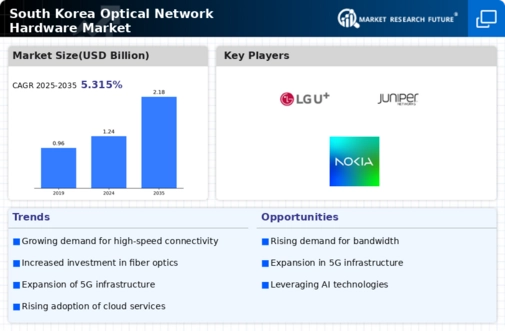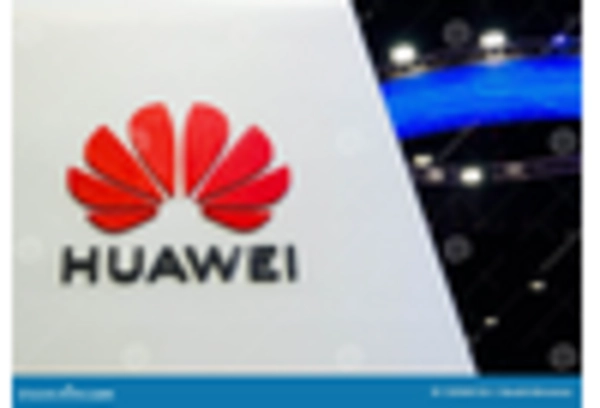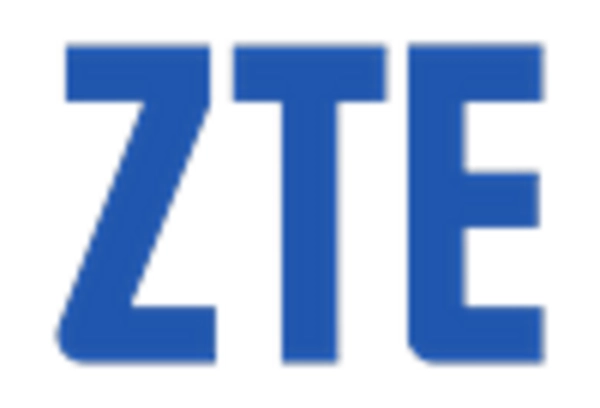Surge in Data Traffic
The optical network-hardware market in South Korea is experiencing a surge in data traffic due to the increasing adoption of cloud computing and streaming services. As more businesses and consumers rely on high-speed internet for various applications, the demand for robust optical network solutions intensifies. Reports indicate that data traffic in South Korea is projected to grow at a CAGR of 25% over the next five years. This growth necessitates the deployment of advanced optical network-hardware to ensure seamless connectivity and efficient data transmission. Consequently, companies are investing in upgrading their infrastructure to accommodate this rising demand, thereby propelling the optical network-hardware market.
Emergence of 5G Technology
The rollout of 5G technology significantly impacts the optical network-hardware market in South Korea. With the government prioritizing the establishment of a nationwide 5G network, there is a pressing need for optical solutions that can support the high bandwidth and low latency requirements of 5G applications. The optical network-hardware market is expected to witness substantial growth as telecom operators heavily invest in fiber-optic infrastructure to enhance service offerings. It is estimated that the 5G sector could contribute approximately $10 billion to the optical network-hardware market by 2026, highlighting the potential for growth driven by this technological advancement.
Growing Cybersecurity Concerns
As cyber threats become increasingly sophisticated, the optical network-hardware market in South Korea is witnessing a heightened focus on cybersecurity. Organizations are recognizing the importance of secure data transmission and are investing in optical solutions that offer enhanced security features. The optical network-hardware market is adapting to these needs by integrating advanced encryption and security protocols into its offerings. This shift not only addresses the growing concerns over data breaches but also positions optical networks as a preferred choice for secure communications. The market is likely to expand as businesses prioritize cybersecurity in their infrastructure investments.
Increased Focus on Smart Cities
The development of smart cities in South Korea is a key driver for the optical network-hardware market. As urban areas evolve to incorporate advanced technologies for improved efficiency and sustainability, the demand for reliable and high-speed optical networks becomes paramount. Smart city initiatives require extensive data collection and real-time communication, which optical network-hardware can effectively provide. The South Korean government has allocated significant funding towards smart city projects, which is likely to boost the optical network-hardware market. This trend indicates a shift towards integrated solutions that enhance urban living, thereby creating opportunities for market players.
Sustainability Initiatives and Green Technology
Sustainability initiatives are gaining traction in South Korea, influencing the optical network-hardware market. Companies are increasingly seeking eco-friendly solutions that reduce energy consumption and carbon footprints. The optical network-hardware market is responding by developing energy-efficient products and technologies that align with these sustainability goals. The South Korean government has set ambitious targets for reducing greenhouse gas emissions, which encourages businesses to adopt greener technologies. This trend not only supports environmental objectives but also enhances the market's appeal to environmentally conscious consumers and organizations, potentially driving growth in the optical network-hardware sector.

















Leave a Comment